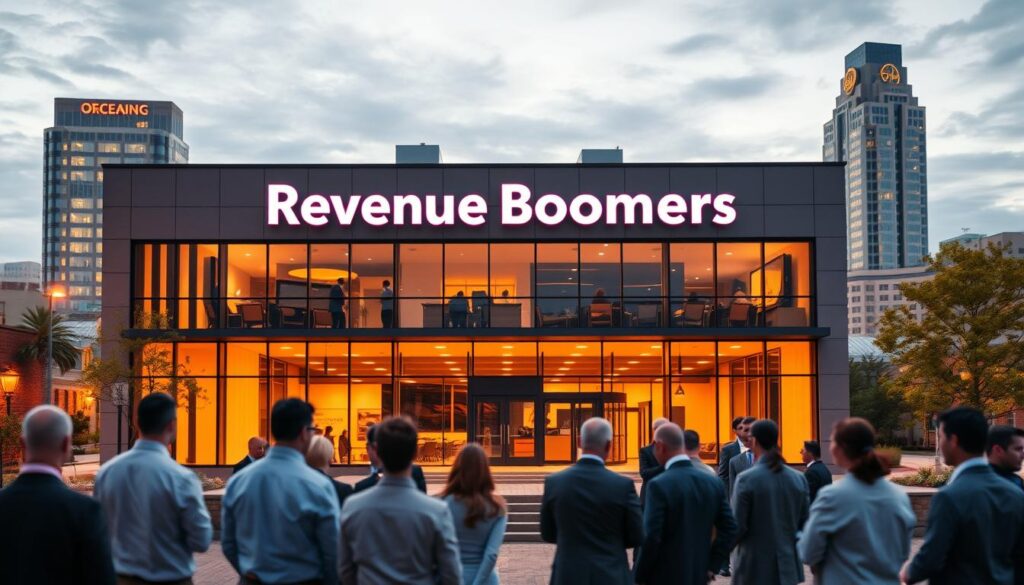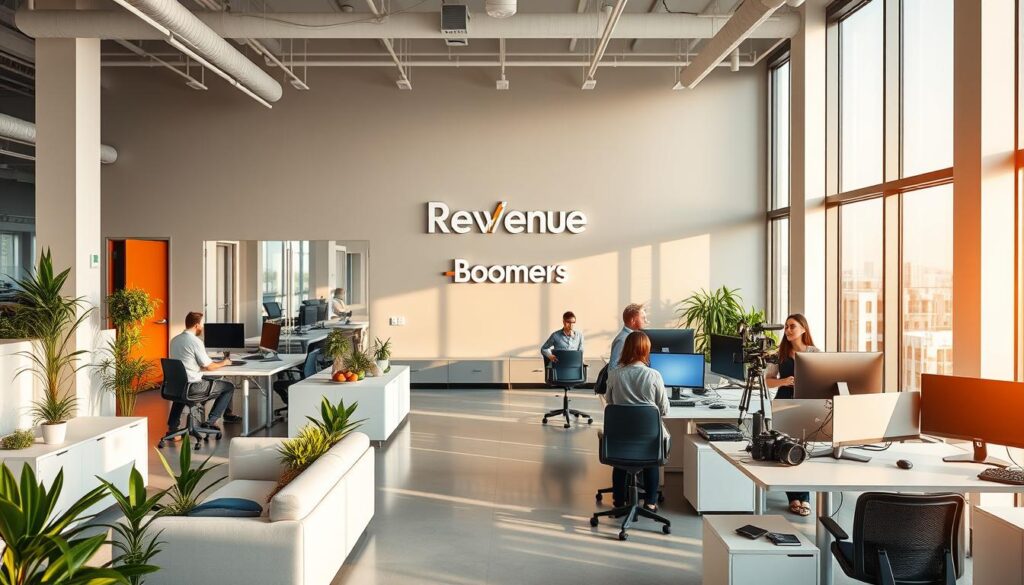In today’s digital world, if you’re running a nursery or a garden center, understanding SEO is no longer optional. It’s a must. With more folks turning to the internet to find local businesses, making sure your online presence is solid can really make a difference. Whether it’s about getting noticed in local searches or making sure your website is mobile-friendly, SEO has a lot to offer. Let’s break down some key takeaways to help you get started.
Key Takeaways
- Local SEO is vital for reaching nearby customers who are searching for garden centers and nurseries.
- Creating engaging content is a great way to attract and retain customers while boosting your search rankings.
- Don’t underestimate the power of a mobile-friendly website; it’s crucial for user experience and SEO.
- Building links through shareable content and local partnerships can enhance your site’s authority.
- Social media isn’t just for engagement; it plays a significant role in supporting your SEO efforts.
Understanding Local SEO Strategies
Importance of Local SEO for Nurseries
Local SEO is like the secret sauce for nurseries and garden centers wanting to attract more local customers. Think about it: when people search for a "nursery near me," you want your business to pop up first, right? That’s where local SEO comes in. By focusing on specific geographic areas, you can make sure your nursery shows up in local search results. This isn’t just about sprinkling a few city names on your website. It’s about creating content that speaks directly to your local audience. Local SEO helps nurseries connect with the right customers in their area.
Optimizing Google My Business Listings
Google My Business (GMB) is a free tool that lets you manage how your business appears on Google Search and Maps. It’s crucial for local SEO. Start by claiming your business if you haven’t already. Then, make sure all your information is accurate—like your address, phone number, and business hours. Add photos of your nursery to give potential customers a glimpse of what they can expect. Don’t forget to update your listing with new events or promotions. This keeps your profile fresh and engaging.
Leveraging Local Directories
Local directories are like the Yellow Pages of the internet. Getting your nursery listed in these directories can boost your local SEO efforts. Make sure your business name, address, and phone number (NAP) are consistent across all listings. This consistency helps search engines verify your business’s legitimacy. Consider reaching out to local blogs or news sites to see if they can feature your nursery. Building these local connections can enhance your online presence and attract more foot traffic to your garden center.
Local SEO isn’t just about getting found online; it’s about connecting with your community. By focusing on local strategies, nurseries can build stronger relationships with their customers and increase their visibility in the local market.
Creating Engaging Content for SEO
Types of Content That Attract Customers
Creating content that grabs attention isn’t just about throwing words on a page. It’s about crafting pieces that speak directly to what your customers are interested in. For nurseries and garden centers, this could mean writing blog posts about seasonal gardening tips, creating detailed guides on plant care, or even sharing stories about the origins of different plant species. High-quality content informs and engages, helping to establish your brand as a go-to resource for gardening enthusiasts.
- Blog Posts: Regular updates on gardening tips or plant care can keep your audience engaged.
- Guides and Tutorials: Step-by-step instructions on planting or maintaining a garden can be very useful.
- Customer Stories: Sharing experiences from other gardeners can create a sense of community.
Incorporating Keywords Effectively
When it comes to SEO, keywords are your best friends—but only if used wisely. It’s important to weave keywords naturally into your content. This means avoiding keyword stuffing and instead focusing on how these words can fit seamlessly into your narrative. Think about what your customers might be searching for and use those phrases to guide your content creation. For example, if you’re writing about growing a landscaping business online, make sure to include relevant terms that potential customers might use.
Utilizing Blog Posts for SEO
Blog posts are a fantastic way to boost your SEO efforts. They provide a platform to dive into topics in detail, which can help draw in readers and keep them on your site longer. When writing blog posts, focus on delivering content that is both informative and engaging. Use headings and bullet points to break up text and make it easier to read. Also, remember to update your content regularly to keep it fresh and relevant. This not only helps with search engine rankings but also keeps your audience coming back for more.
"Creating content that resonates with your audience is more than just a marketing tactic; it’s about building a lasting relationship with your readers."
Mobile Optimization for Garden Centers

Importance of Mobile-Friendly Websites
These days, everyone and their grandma is browsing on their phones. If your garden center’s website isn’t mobile-friendly, you’re missing out big time. A mobile-friendly site means users can easily read text without squinting, and buttons are big enough for even the clumsiest thumbs. Plus, Google loves it and will rank you higher if your site works well on mobile.
Best Practices for Mobile SEO
- Responsive Design: Make sure your site adjusts to any screen size. Whether it’s a phone, tablet, or something in between, your site should look good.
- Speed Matters: Slow-loading pages are a big no-no. Optimize images and use tools to ensure quick load times.
- Easy Navigation: Users should find what they’re looking for without getting lost. Clear menus and search bars are your friends.
Impact on User Experience
A smooth mobile experience keeps visitors on your site longer. They’ll browse more, maybe even buy something. If users get frustrated, they’ll bounce, and you lose a potential sale. Remember, a happy user is a returning customer.
"In today’s fast-paced world, ensuring your website is mobile-friendly isn’t just good practice—it’s essential for staying competitive."
In short, mobile optimization isn’t just about keeping up with trends; it’s about mastering garden center inventory to enhance customer satisfaction and boost your business. Get it right, and you’ll see a positive impact on both your SEO and your bottom line.
Link Building Techniques for Nurseries
Creating content that others want to share is like planting seeds for your nursery’s SEO growth. Think about blog posts that dive into the nitty-gritty of plant care or showcase the latest trends in gardening. When your content is engaging and informative, people are more likely to link back to your site, boosting your SEO. High-quality content is the heart of successful link-building.
Guest Blogging Opportunities
Guest blogging is another smart move. Reach out to gardening or home improvement websites and offer to write a post. It’s a win-win: you provide them with great content, and you get a link back to your nursery’s site. This not only drives traffic but also helps improve your search engine ranking. Just make sure the sites you choose are reputable.
Building Local Partnerships
Building partnerships with local businesses can be a game-changer. Collaborate on projects or sponsor local events and have each entity link to the other’s website. This not only helps with link building but also strengthens your connection with the community. It’s about creating a network that benefits everyone involved.
Engaging in these link-building techniques can significantly improve your nursery’s online presence and connect you with your local community. Remember, it’s not just about the number of links, but the quality. Focus on earning links from reputable sources to boost your site’s authority.
Leveraging Social Media for SEO
Engaging with Customers Online
Social media isn’t just about posting pictures of your latest landscaping projects; it’s a key tool for engaging with your audience. This means interacting with them through comments, messages, and even polls or contests. By doing this, you not only build a community but also increase your visibility online. Engagement is the heartbeat of social media success. When your audience feels heard and valued, they are more likely to share your content, which can lead to more traffic to your website.
Sharing Valuable Content
Content is king, but only if it resonates with your audience. Sharing tips, how-to guides, or behind-the-scenes looks at your nursery can captivate your followers. Make sure your posts are informative and entertaining. A good mix of content keeps your profile fresh and engaging. Consider creating a content calendar to plan out what you’ll post and when. This keeps your strategy organized and ensures a steady flow of content.
Encouraging User-Generated Content
User-generated content is like free advertising. Encourage your customers to share their photos or stories about how they use your products. This not only boosts your SEO by providing fresh content but also builds trust and authenticity. When customers see real people using your products, it creates a connection that can drive sales. You could run campaigns or offer incentives for the best user-submitted content, making it a win-win for everyone involved.
The Role of Keyword Research in SEO
Identifying Relevant Keywords
Keyword research is like the backbone of any SEO strategy. It’s all about figuring out what words and phrases people are typing into search engines when they’re looking for stuff related to your business. For nurseries and garden centers, this means understanding what potential customers are searching for, whether it’s "best indoor plants" or "local garden center deals." Using tools like Google Keyword Planner can help you find these high-impact keywords that can drive more traffic to your site.
Incorporating Keywords in Content
Once you’ve got your list of keywords, the next step is to weave them naturally into your content. This isn’t just about stuffing keywords everywhere; it’s about making sure your content reads well and provides value to your audience. Think about blog posts, product descriptions, and even your meta tags. The idea is to make your content relevant to both the reader and the search engines. Effective keyword integration can significantly boost your site’s visibility and engagement.
Monitoring Keyword Performance
After incorporating keywords into your content, it’s crucial to keep track of how they’re performing. This means regularly checking which keywords are bringing in traffic and which ones aren’t doing so well. Tools like SEMrush can help you monitor these metrics. Keep an eye on trends and adjust your strategy accordingly. Remember, keyword research isn’t a one-and-done deal; it’s an ongoing process that requires regular updates to stay relevant in a changing digital landscape.
Keyword research is not just about finding the right words; it’s about understanding the needs and behaviors of your audience. By staying in tune with what your customers are searching for, you can create content that truly resonates with them and drives meaningful engagement.
SEO Analytics and Performance Tracking

When it comes to SEO for child care services, knowing how well your strategies are working is key. You need the right tools to track your progress and make improvements. Here are some tools you might find useful:
- Google Analytics: This is a must-have for any website. It helps you see where your traffic is coming from and how visitors are engaging with your site.
- SEMrush: A great tool for tracking your rankings and finding new keyword opportunities.
- Moz Pro: Offers insights into your site’s SEO health and helps you monitor your search visibility.
These tools can give you a clear picture of what’s working and what needs fixing.
Understanding where your website traffic comes from is crucial. It helps you focus your efforts on the right channels. Here’s what to look for:
- Organic Search: This is traffic that comes from search engines. If this is high, your SEO efforts are paying off.
- Direct Traffic: This is when people type your URL directly into their browser.
- Referral Traffic: This comes from links on other websites.
By analyzing these sources, you can tailor your SEO strategy to improve the right areas.
Once you’ve gathered data from your tools and traffic analysis, it’s time to make some changes. Here’s how:
- Identify Weak Points: Look for areas where you’re not performing well and focus on those.
- Test New Keywords: Use data to find new keywords that might bring in more traffic.
- Update Content Regularly: Keep your content fresh and relevant to maintain your rankings.
Regular analysis and adjustments are the keys to staying ahead in the SEO game. It’s not just about setting up your strategy and forgetting it; it’s about constant improvement and adaptation.
Conclusion
So, there you have it. SEO for nurseries and garden centers isn’t just some fancy tech talk—it’s a real game-changer. By getting your online presence in order, you can reach more folks who are looking for what you offer, right in your area. It’s not just about popping up in search results; it’s about making sure your business is the one people think of when they need plants or gardening advice. Sure, it takes some effort to get it all set up, but once you do, the payoff can be pretty sweet. More visitors, more sales, and a stronger community presence. So, why not give it a shot? Your garden center’s future might just thank you for it.
Frequently Asked Questions
What is SEO and why is it important for nurseries?
SEO, or Search Engine Optimization, is a way to make your website show up higher in search engine results. It’s important for nurseries because it helps more people find them online when they’re looking for plants and gardening products.
How does keyword research help nurseries with SEO?
Keyword research helps nurseries find out what words people use to search for plants and gardening stuff. By using these words on their website, nurseries can appear higher in search results and attract more visitors.
Why is local SEO crucial for nurseries and garden centers?
Local SEO is important because it helps nurseries show up in local search results. This means people nearby looking for plants can easily find them, which can bring more customers to their physical store.
How can content marketing boost a nursery’s SEO?
Content marketing involves creating helpful and interesting articles, blogs, or guides about plants and gardening. This content can attract more visitors to the nursery’s website and improve its search engine ranking.
What role does social media play in a nursery’s SEO strategy?
Social media helps nurseries reach more people and drive traffic to their website. By sharing content and interacting with followers, nurseries can boost their online presence and support their SEO efforts.
Why is mobile optimization important for nursery websites?
Mobile optimization means making sure a website works well on smartphones and tablets. It’s important because many people use these devices to search online, and a mobile-friendly site can improve search rankings and user experience.






